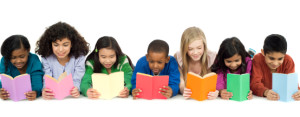
 I come from a long line of readers for whom nothing is more torturous than sitting in a waiting room without something – anything– to read. For us, reading is habitual and voracious. We’ll read flyers and pamphlets, 10-year-old magazines, even shampoo bottles.
I come from a long line of readers for whom nothing is more torturous than sitting in a waiting room without something – anything– to read. For us, reading is habitual and voracious. We’ll read flyers and pamphlets, 10-year-old magazines, even shampoo bottles.
As an educator and a parent, one crucial practice I desire in my students and children is that reading becomes as pervasive and uncontrollable a habit as nail biting or tapping their pen during a lecture. I want students and children to read for the same reason George Leigh Mallory climbed Everest: Because it is there.
The many benefits of reading for pleasure
The American Library Association has also found a strong connection between daily independent reading habits and overall student performance. The ALA cites findings from a number of studies:
- Students who read independently become better readers, score higher on achievement tests in all subject areas, and have greater content knowledge than those who do not
- The more elementary-aged students read outside of school, the higher they scored on reading achievement tests
- Multiple studies support that even a small amount of independent reading increases primary and elementary students’ reading comprehension, vocabulary growth, spelling facility, understanding of grammar, and knowledge of the world
One key factor in the positive influence of this reading seems to be that it is voluntary — students seek out books and participate of their own volition.
Early exposure to reading appears to pay off in that it creates an expectation in children that reading is an essential part of their daily lives, thus the families of pre-readers in preschool, kindergarten, and early elementary must be encouraged to expose them to reading through story time at the library or reading as daily habit in the home.
As students grow up, it appears that some level of independence should be encouraged as it supports their commitment to reading and that later elementary and middle-school students should be spurred to choose their own books within a challenging framework.
The bad news: Americans are reading less
A 2007 study from the National Endowment for the Arts showed that American students are reading less. Over the course of 10 years — 1992 to 2002 — adults showed an overall decline in reading for fun of about seven percent and students showed a similar decline, approximately five percent.
Theories on the reason for the decline abound, but the biggest lies in the idea of displacement. It is thought that American reading times are being sacrificed for television or other hobbies. This drop in reading for pleasure has serious side effects, namely a trickle-down influence on students. Teachers have attempted to rectify the problem by assigning reading homework, only to meet frustration when students are noncompliant.
How educators can support independent reading
As an educator, I am aware of student resistance to homework and hope that rather than an assignment, my students will pick up the habit of daily doses of reading. Research supports the strong positive correlative effect of 20-60 minutes of daily reading.
Subsequent research has found that the best amount may vary; low-level readers benefit from 15-20 minutes whereas high level readers get the greatest benefit from reading 45 minutes or more. Regardless of the best individual amount, research consistently shows that time dedicated to independent reading pays off.
Because teachers have a significant influence on their students’ habits and performance, one solution is to set high expectations of them as readers. I begin each Monday morning by asking my students what they have read over the weekend, which is often rewarded with insightful discussions of newspaper articles and books; I am never afraid to suggest new reading to them. Modeling consistent independent reading for my students, and expecting the same from them, is a key means of influencing their behavior.
My son’s teacher has the same expectations of her class, though she goes a step further and asks them to keep a record of their reading as a method of reflecting upon and rewarding the effort they have put into their daily habits. My daughter’s teacher has his students blog about the reading they’ve done and gives them tangible rewards, marking their progress on the ceiling with paper books.
The rewards encourage competition between classmates and the blog entries pique the interest of other students, who then read the same book and generate discussions with their fellow readers. Regardless of how it is accomplished, the general theme is the same: We collectively expect our students to read and, as students often do, they rise to the expectation.
Monica Fuglei is a graduate of the University of Nebraska in Omaha and a current adjunct faculty member of Arapahoe Community College in Colorado, where she teaches composition and creative writing.
Categorized as: Tips for Teachers and Classroom Resources